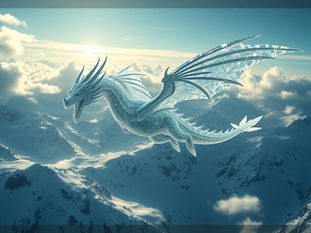
Control Midjourney Video Shots: Simple Ways to Guide Your AI Camera
Jul 28
4 min read
0
157
0

Midjourney now creates video, but it does not have easy camera controls. You might try simple commands like "zoom in" or "zoom out." Sometimes these work, but often they do not. This can be confusing, and generating videos can cost you credits. This guide shares different prompting ideas that can help you get the video shots you want. These tips are based on many hours of video creation. They are a good starting point for your own work.
Mastering Camera Movement in Midjourney
Add Speed to Your Commands
A simple way to get better camera results is to add the idea of speed to your prompt. Use either "fast" or "slow." For example, if "zoom out" does not work, try "zoom out slowly." You might wonder why speed matters so much for Midjourney videos, but it makes a big difference. Think about using "slowly" or "quickly." You do not need to make it more complex than that. "Slowly" often means a softer, more gradual movement. "Quickly" can show faster motion. When your basic camera prompts do not work, remember to add a speed word to your directions.
Describe the End Goal
Another good idea is to add a second part to your prompt. Describe what you want the camera to show by the end of the scene. For instance, instead of just "zoom out," you can try "zoom out to full body shot." This helps Midjourney understand the full path of the camera movement. It guides what the camera will show over time.
Keep the Camera Still
What if you do not want any camera movement? Midjourney normally creates videos with some motion. For a still camera, try the prompt "Static still wallpaper." This can give you amazing results where the camera does not move at all, which is rare for Midjourney videos. You can also try adding another detail about the scene, like "Static camera. the plants blow in the wind." This tells Midjourney to keep the camera still while other things in the scene are allowed to move.
To get more consistent results with your camera controls and other Midjourney features, consider exploring the Midjourney Automation Suite from TitanXT. It can help streamline your creative process.
Describe the Action, Not Just the Command
Instead of saying "zoom," think about describing the action of zooming. For example, use "camera getting closer." This is very helpful if your scene has more than one item. Imagine a picture of a woman holding an apple. You could say, "camera getting closer to her face" or "camera getting closer to the apple." This changes where the zoom focuses. It helps guide the camera to a specific part of your scene. It might not always be perfect, but it is a good way to get the type of movement you want.
Use Tracking for Consistent Motion
If you want the camera to follow a subject with steady movement, try adding the phrase "The camera tracks the subject." This works very well for things like cars or people moving. If you prompt "the car speeds away," the camera might stay still. But if you add "The camera tracks the car," it will do a better job of moving with the car as it speeds away.
Consider Motion Blur
Adding "motion blur" to your prompt can sometimes make animations look better. It does not work every time, but it can improve the visual quality of movement. For instance, "the car speeds away, motion blur" can create more interesting and dynamic results than "the car speeds away" alone.
Automating these kinds of detailed prompts can save you time and improve your workflow. Take a look at the Midjourney Automation Suite from TitanXT to see how it can help you get the best out of Midjourney.
Refer to the Camera as "The Viewer"
An interesting alternative is to call the camera "the viewer." So instead of "camera moves away," you would say "the viewer moves away from the subject." This can lead to good, simple results. You can also combine this with the speed tip: "the viewer moves away slowly from the subject." This method often works very well.
Panning: An Experimental Approach
Moving the camera side to side, known as panning, is harder to achieve in Midjourney right now. One method is to say, "The subject stands still. The viewer moves to the left." This does not always work, as the subject might move with the camera. However, sometimes it does work, which shows it is possible. Another way to try for a pan is to create the first 2D image with the camera idea in mind. For example, prompt the image generator with "camera pans to the left of a woman in sleek purple robes." Then, animate that image. This might lead to surprising or interesting results that get closer to your vision.
These are some of the most reliable ways to control your camera in Midjourney. By experimenting with these prompts and combining them, you can gain more control over your video creations. For even greater efficiency and advanced capabilities, explore the Midjourney Automation Suite from TitanXT. It is built to enhance your Midjourney experience.






